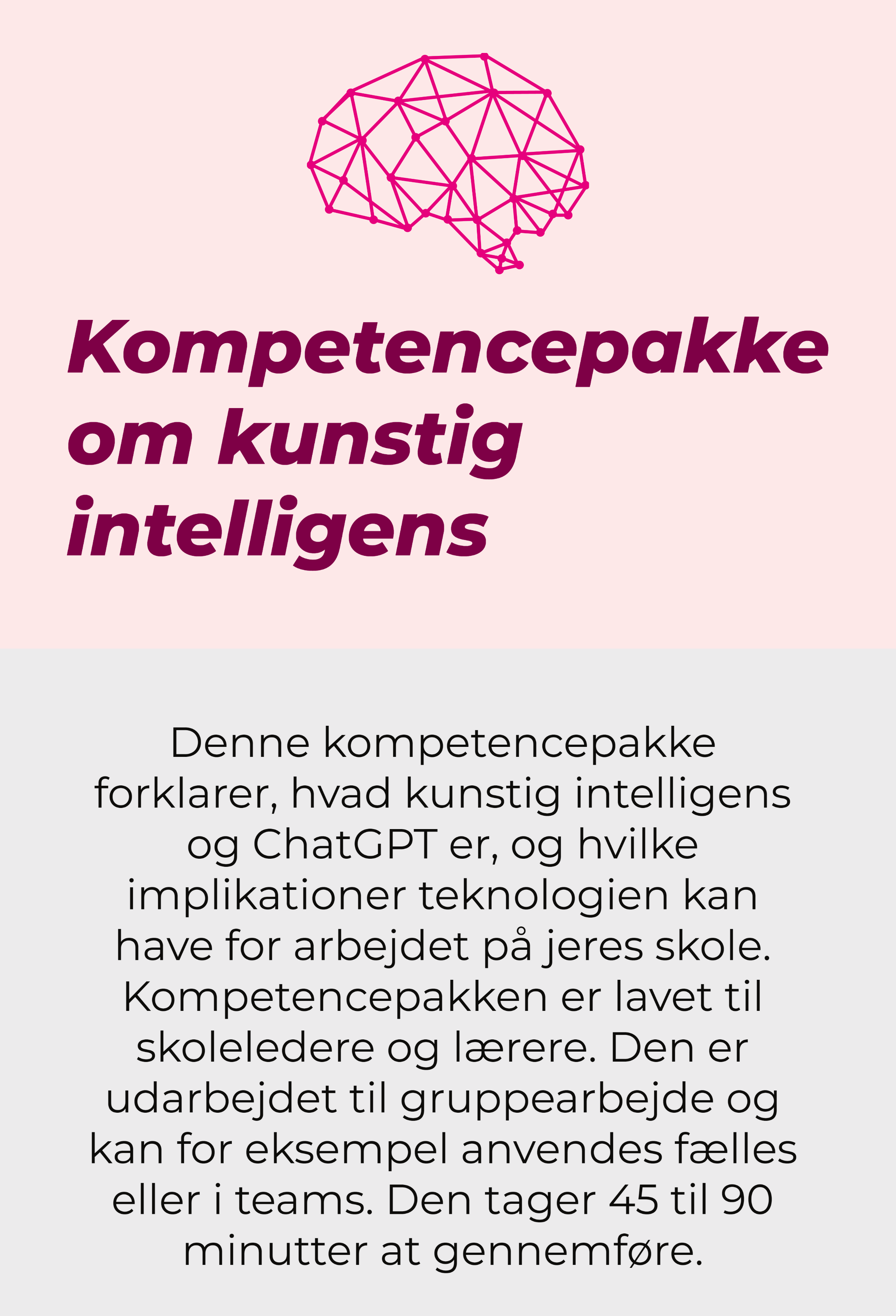We hear from many educational institutions that are having difficulty navigating the handling of artificial intelligence and are trying to make local regulations. The big problem with regulating the use of artificial intelligence is that the technology is constantly evolving. Consequently, the rules must be constantly updated, and employees must constantly be aware of new changes.
Therefore, it would make more sense to have an understanding paper that can address the new opportunities on a more general level, which is something that all parts of the organization must consider. In the following, we present our considerations and a concrete suggestion of what such an understanding paper could look like. The recommendations can then be taken to the individual institution and drawn up their version.
Considerations can also be used for conversations and reflection in management, teacher groups and together with students, students and parents.
Special use concerning data protection, privacy, and GDPR
The first thing to consider will be whether the services or tools comply with the GDPR. This means that you must be aware of how to access the tools and what you use the tools for.
As a general rule, a data processing agreement is required if personal data is to be exchanged on behalf of children and young people under the age of 18. In practice, you cannot use services that require a login, as email addresses are personal data.
If access is allowed, remember that the data you process via the service does not contain personal data. Even with a data processing agreement, it is not sensitive to personal data. Thus, you cannot process personal data - including school data such as student names, students' assignments, and communication with students, parents, or colleagues- just as you must avoid sharing images and other media forms with people such as teachers and students.
Likewise, you must keep in mind whether you are processing data that is not personal data, but which is nevertheless confidential. For example, financial information.
A good advice might be to think of the system you use as a publicly accessible platform where everyone can follow what you write. Therefore, one should only use it for something that everyone must know.
If you want to use AI tools, you need to ensure that all students and staff have equal access so that inequality is not created.
Based on the above focus points, a checklist might look like this:
- Check that the tools or services you use are GDPR compliant.
- Ensure that there is a data processing agreement in place if you are to exchange personal data on behalf of children and young people under the age of 18.
- Even with a data processing agreement, you must ensure that the data you process does not contain personal data and is not personally sensitive. This includes school data such as student names, student assignments, communication with students, parents, or colleagues.
- Avoid sharing images and other media forms that depict people, including teachers and students.
Considerations for teaching with AI
If you as a teacher want to use artificial intelligence in teaching, there are several conditions that you need to be aware of. It is both about what the generative AI systems are good at and what they are less good at, but also (as it is with all types of tools) when to choose to use them and when to choose them from.
It is, therefore, both about being aware of what it is that is the focus of learning and how generative AI changes this:
- Does AI support the learning process, or is it a way to avoid learning?
- How will we allow students to use the tools, and how will we avoid cheating?
- What to pay special attention to about facts, including outdated knowledge, bias, source references, and confabulation.
- Remember correct attribution of source.
Use each other to be curious about the new possibilities. Examine what they can do, but also what they can't.
Considerations for teaching AI
When you start using technology in your teaching, you also need to consider how you learn yourself and, at the same time, teach students how to use the technology appropriately. It is very much about education and using technology responsibly.
In relation to generative AI systems, it is about reflections on how to make good and accurate queries. This will be both if you need to work with AI-generated images, texts or music.
Like other technologies, artificial intelligence also has implications for individuals and society. When artificial intelligence is made the subject of teaching, it allows for a number of reflections and discussions about the possible consequences, for example in relation to understanding knowledge, economics and climate.
Keep an eye out for updates and advancements in AI technology, especially AI regulation. Ensure that the recommendations are updated continuously with relevant information, legislation, and recommendations from UVM.
Sources:












